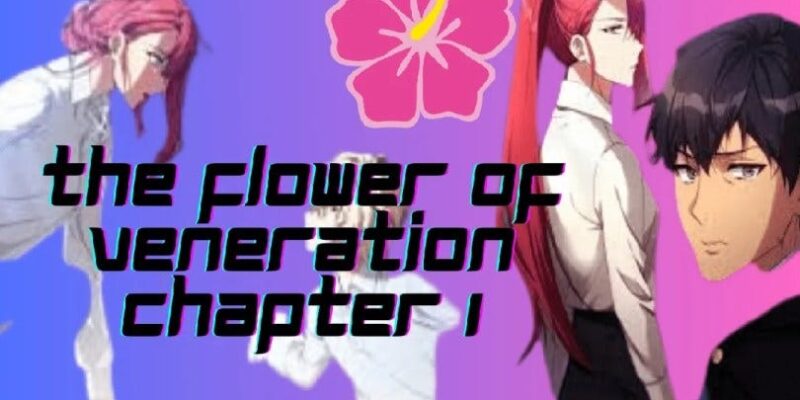Few flowers in the enormous garden of literary treasures inspire as much wonder and respect as the Flower of Veneration Chapter 1. Hidden away in the pages of both old books and modern novels, this mysterious flower symbol is a seductive representation of spirituality, beauty, and cultural legacy. Examining the background, meaning, care, and modern applications of this hallowed flower reveals a fascinating and motivating fabric.
The History and Significance of the Flower:
Contents
The Flower of Veneration Chapter 1 has roots that go deep into the soil of human civilization, reaching back through the history of time to ancient cultures and civilizations. These roots go back to the beginning of human civilization.
From the mysterious depths of the Far East to the powerful views of ancient Greece, this flower has been cherished as a symbol of enlightenment, love, and purity throughout several cultures and periods. Its beautiful petals and addictive aroma acted as gateways to the divine, and it was admired by poets, priests, and philosophers alike.
It found its place in sacred ceremonies, epic songs, and eternal tales, where it fulfilled its role as a pathway to the heavenly source.
In many civilizations, the Flower of Veneration Chapter 1 has been given a variety of titles and abuse, each of which reflects the distinct meaning that it holds within the context of the culture from which it originated. In the East, it is frequently referred to as the “Lotus of Enlightenment,” which represents the voyage from darkness to illumination. On the other hand, in the West, it is recognized as the “Rose of Love,” which generates feelings of passion and love.
Symbolism and Meanings Associated with the Flower:
There are a variety of symbolic meanings that are embodied in the first chapter of The Flower of Veneration. These meanings build upon each other to create a complex and multidimensional web of importance.
At its essence, it functions as a global symbol of purity and innocence, serving as a reminder of the pure beauty that resides within the human soul, which is unaffected by the ups and downs of life.
Furthermore, the flower carries profound spiritual overtones, and it is a symbol of the never-ending pursuit of enlightenment and self-realization. Along the same lines as the lotus flower, which emerges from the dark recesses of the pond to bloom in clean beauty, the human soul strives to transcend the constraints of physical existence and achieve spiritual liberation.
The Flower of Veneration Chapter 1 is related to several themes, including endurance and renewal, in addition to the significant spiritual meaning it possesses. Despite the severe conditions of its location, this hardy flower continues to bloom year after year, offering a powerful reminder of the cyclical nature of life and the unending promise of rebirth.
Cultivation and Care Tips for Growing the Flower:
Developing the Flower of Veneration Chapter 1 calls for a careful balancing act of horticultural knowledge, patience, and commitment. Growing in a greenhouse or the limitations of a home garden, this magnificent flower needs the best care and attention.
The Flower of Veneration Chapter 1 cultivation depends critically on choosing the ideal site first and foremost. Planting it somewhere with lots of sunshine and well-drained soil can help avoid waterlogging, which can cause root rot.
Following planting, the plant must be regularly watered to maintain its health and vitality, particularly in the hot summer months when moisture levels drop. Watering too much can cause fungal infections and root asphyxia.
Apart from sufficient watering, a balanced fertilizer can supply the nutrients required for strong development and blooming. Applying a slow-release fertilizer as directed by the manufacturer will help prevent overfeeding the plant and creating nutrient imbalances.
Keeping the plant healthy and looking good also requires pruning off yellowing leaves and dead blossoms. Gardeners can encourage ongoing blooming and stop the spread of illnesses and insects by removing wasted blooms and unhealthy leaves.
Modern Interpretations and Adaptations of the Flower:
Even in this modern day, the first chapter of The Flower of Veneration remains a wellspring of ideas for spiritual seekers, artists, and designers.
Its serene appeal has long served as an inspiration for artists working in a wide variety of media, including paintings, sculptures, and photographs. The flower’s delicate shape and vivid colors offer unending creative potential, whether in the form of abstract interpretations or classical still lifes.
Just as the Flower of Veneration Chapter 1 is admired for its refined beauty in every aspect of design, it is also used as an element in jewelry, home décor, and clothing. By combining its imagery into their products, designers enhance them with an abstract charm that knows no bounds, both in terms of time and place.
In addition, spiritual practices such as mindfulness, meditation, and holistic healing still heavily incorporate the teachings of Chapter 1 of the Flower of Veneration. As a means of contemplation, tranquility, and spiritual awakening, its transforming potential has been utilized by spiritual practitioners.
Exploring Beyond the Page: Further Engagement
In addition to its literary portrayal, the Flower of Veneration Chapter 1 encourages readers to dive deeper into its mysteries and investigate its cultural importance through a variety of other routes of involvement.
Those who have a passion for botany can completely submerge themselves in the magnificence of this magnificent flower by going to botanical gardens and nurseries. Within these establishments, they can be stunned by its beauty and gain knowledge about its cultivation and preservation.
There is a platform for intellectual interchange and academic discourse that is provided by educational workshops and seminars. These workshops and seminars offer vital insights into the cultural meaning and symbolism of this treasured flower.
Furthermore, online networks and forums offer enthusiasts a virtual area in which they can communicate with one another, discuss their experiences, and exchange information. This helps to cultivate a sense of solidarity and friendship among persons who share a passion for this botanical treasure.
Conclusion:
Our hearts and minds are captivated by the Flower of Veneration because of its beautiful appearance, rich history, and symbolic meanings. It holds a particular place in our hearts and thoughts. This remarkable flower has been loved throughout the ages due to the profound cultural ties it has and the spiritual value it possesses, as we have discussed in this article.
The Flower of Veneration has been a treasured symbol of veneration and adoration throughout history, from the traditions of ancient civilizations to those of modern-day traditions. Its delicate petals and hypnotic smell create feelings of wonder and surprise, and they serve as a reminder of the fragility and temporary nature of life itself.
Even though a lot of time has passed, the charm and intrigue that surround this flower have not changed at all. As a timeless reminder, it serves as a reminder that even in the middle of our ever-changing world, there are characteristics that transcend generations and connect us to our common humanity.
The Flower of Veneration continues to be a source of inspiration for creative endeavors, contemplation, and reflection, regardless of whether it is grown in gardens or displayed in artistic pictures. Every single flower has its own unique narrative, which conveys a great deal of information about our collective need for beauty, connection, and significance.
Therefore, let us take a brief pause, take a few deep breaths, and allow ourselves to be completely submerged in the ethereal presence that these extraordinary flowers have given upon us. The grace of these flowers should serve as a reminder to us to calm down in the middle of the hustle and bustle of life.
















